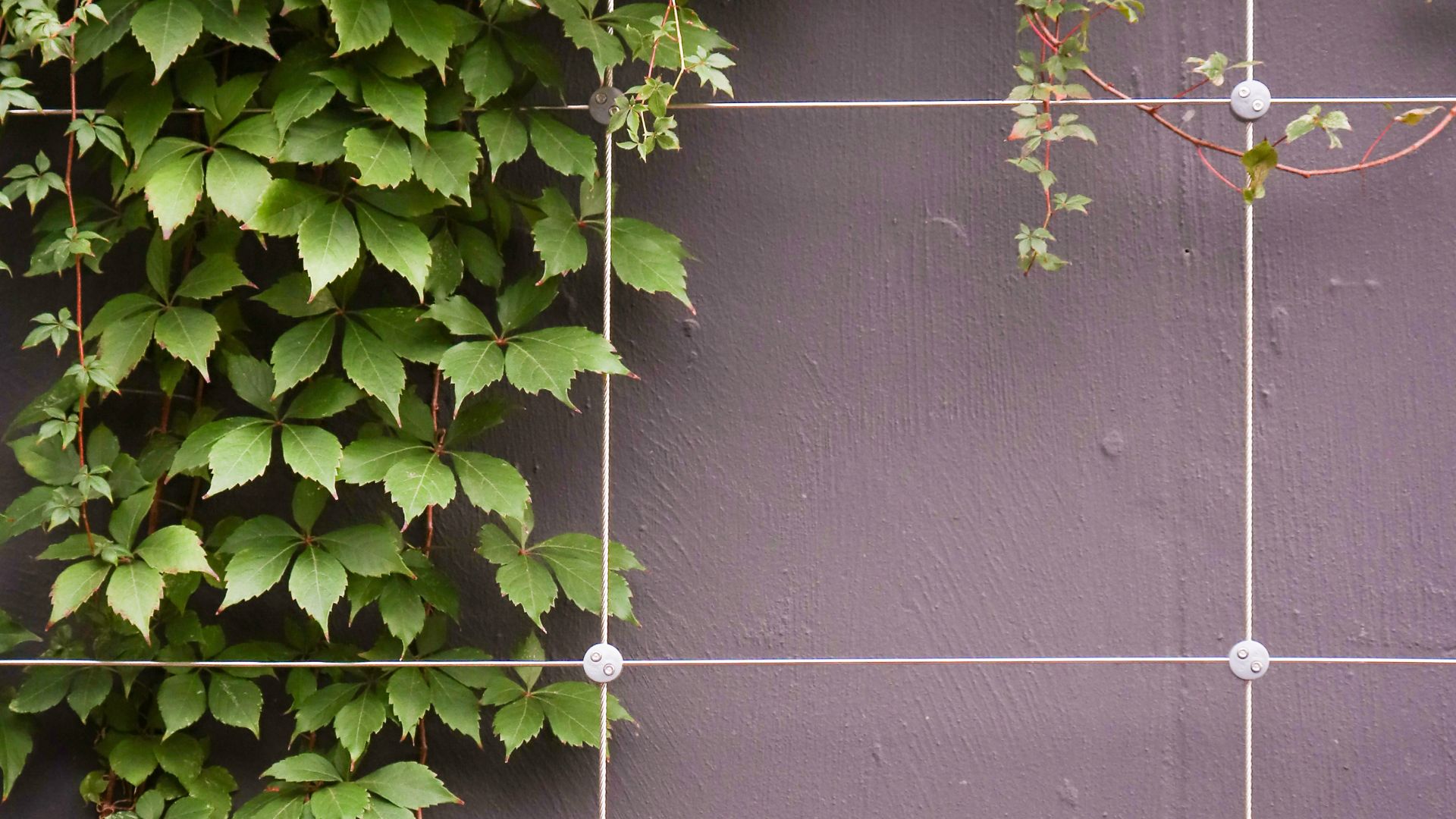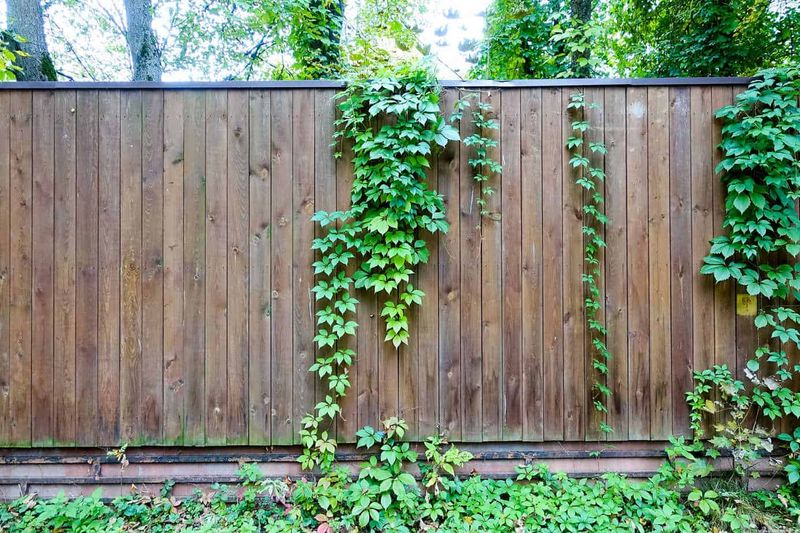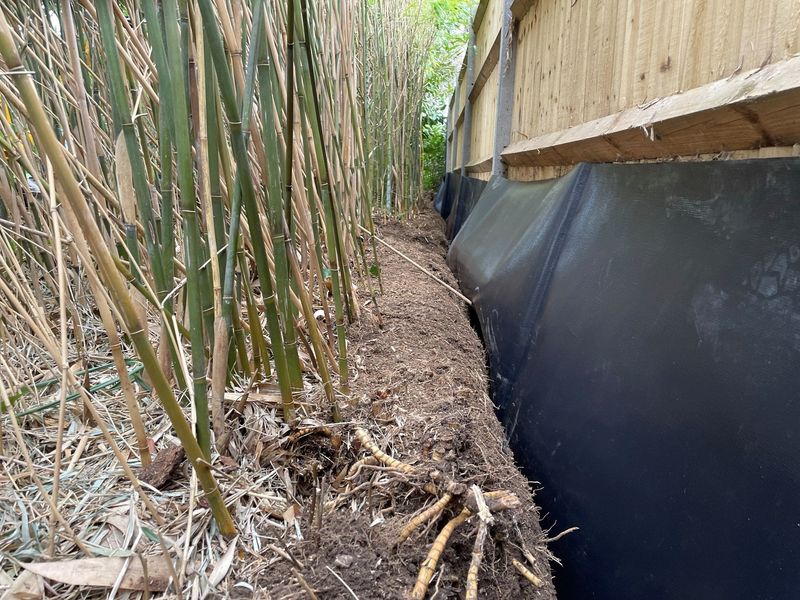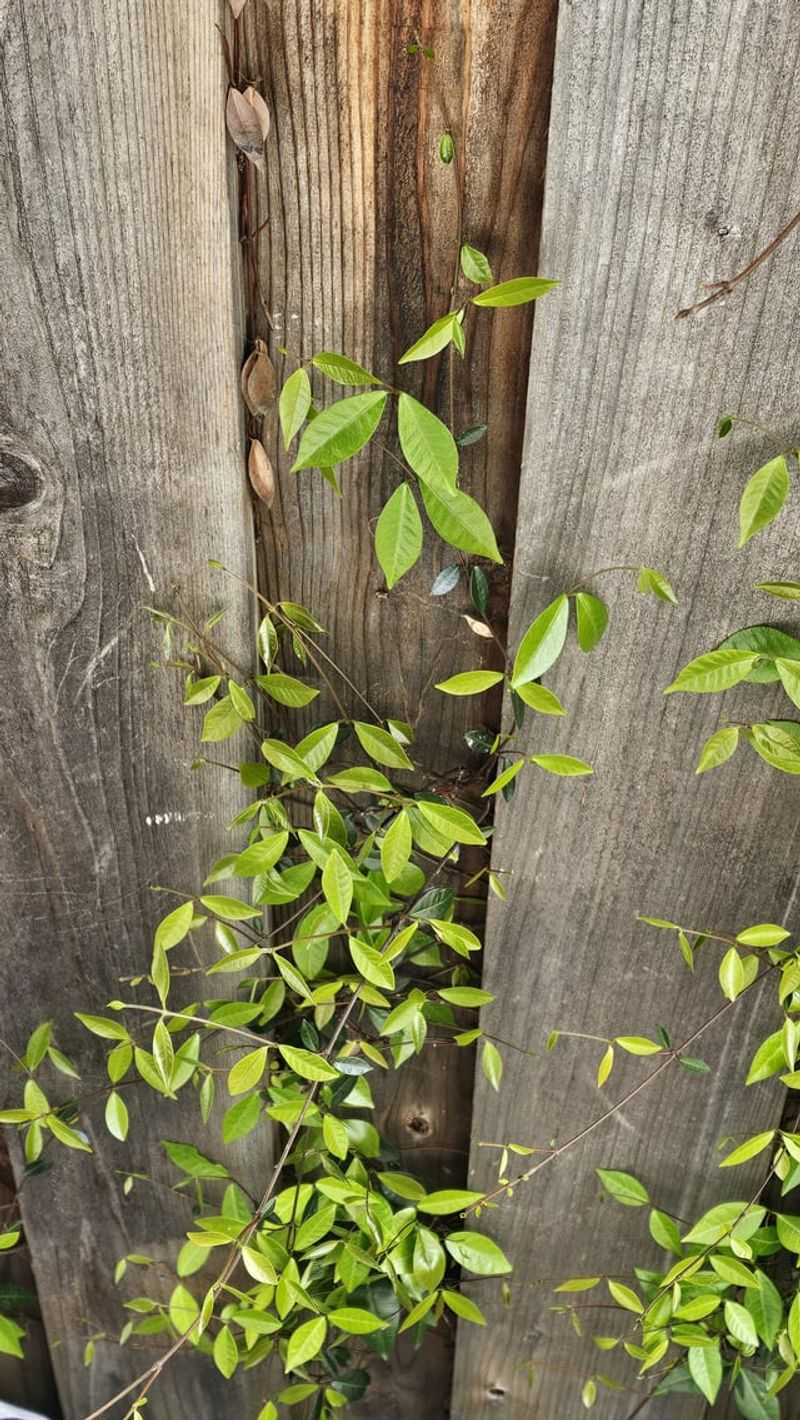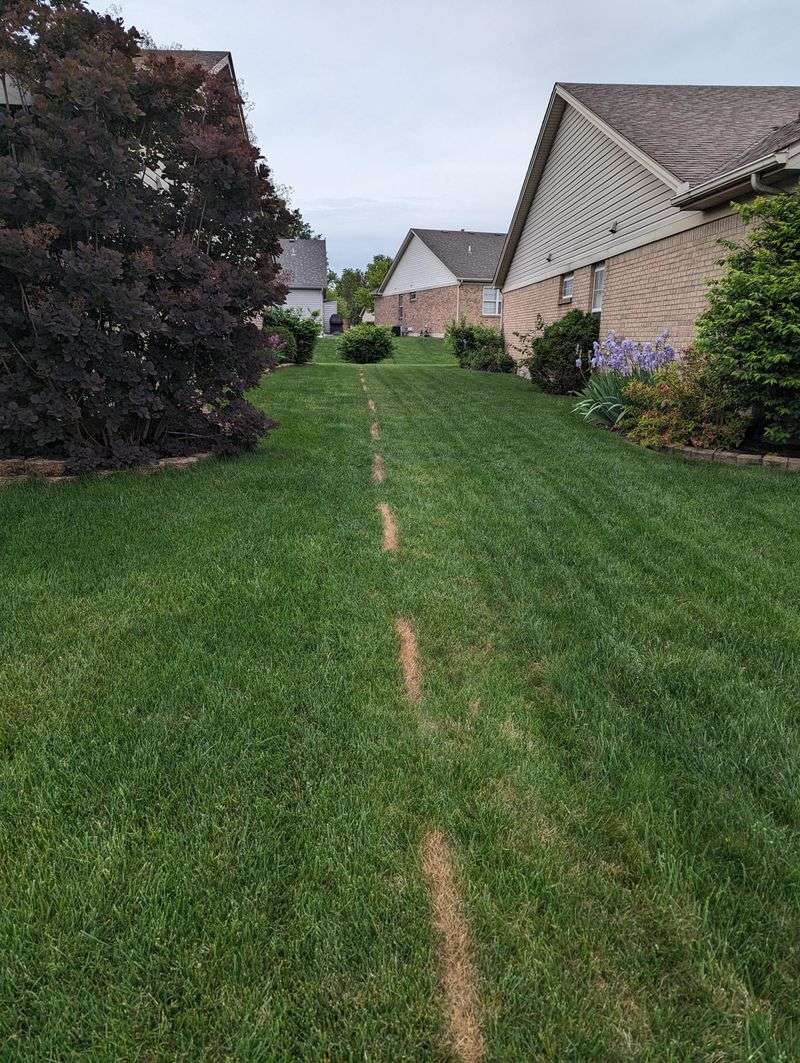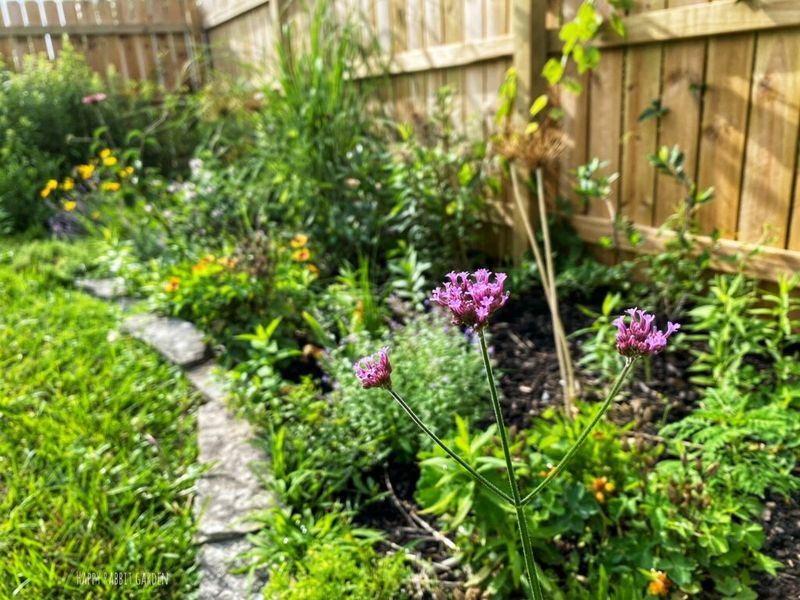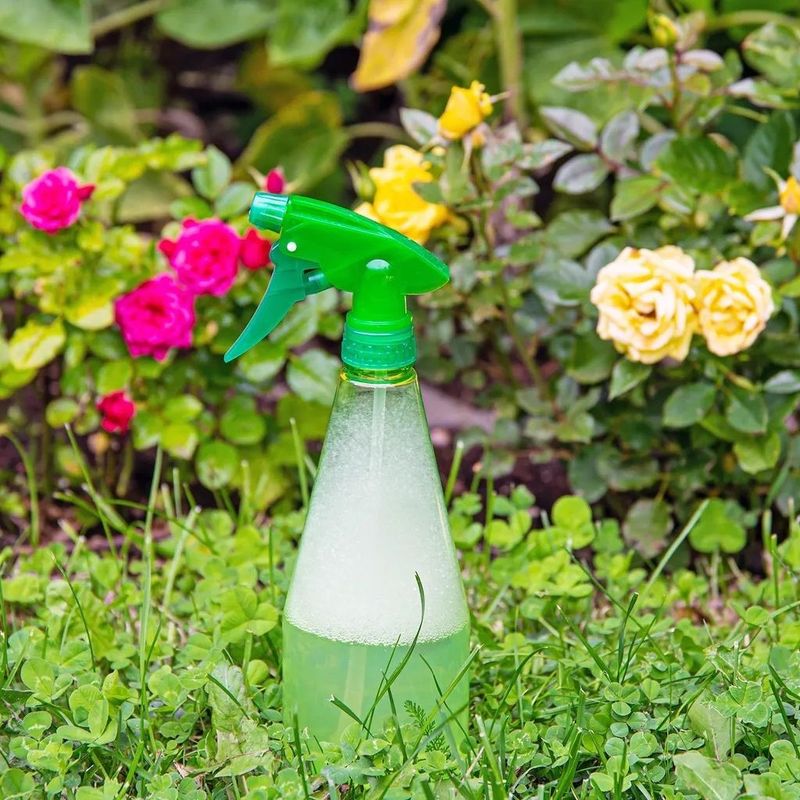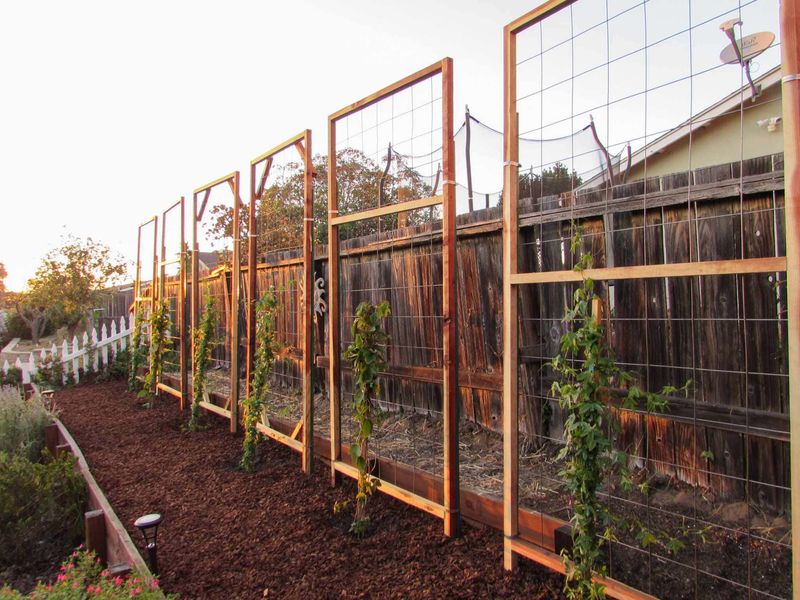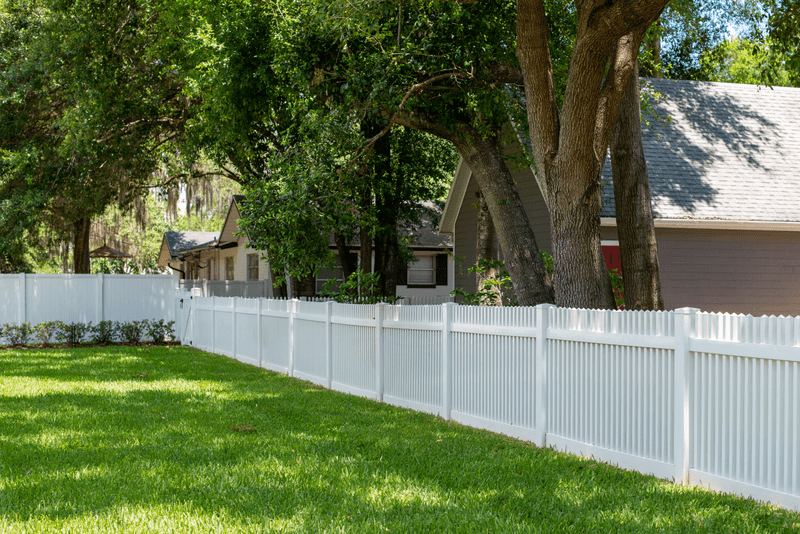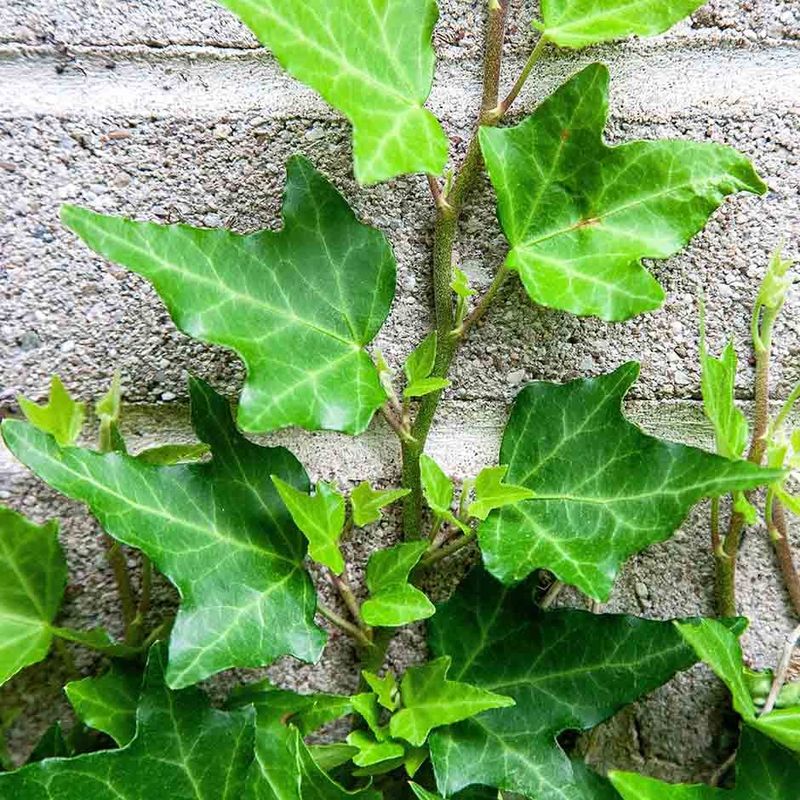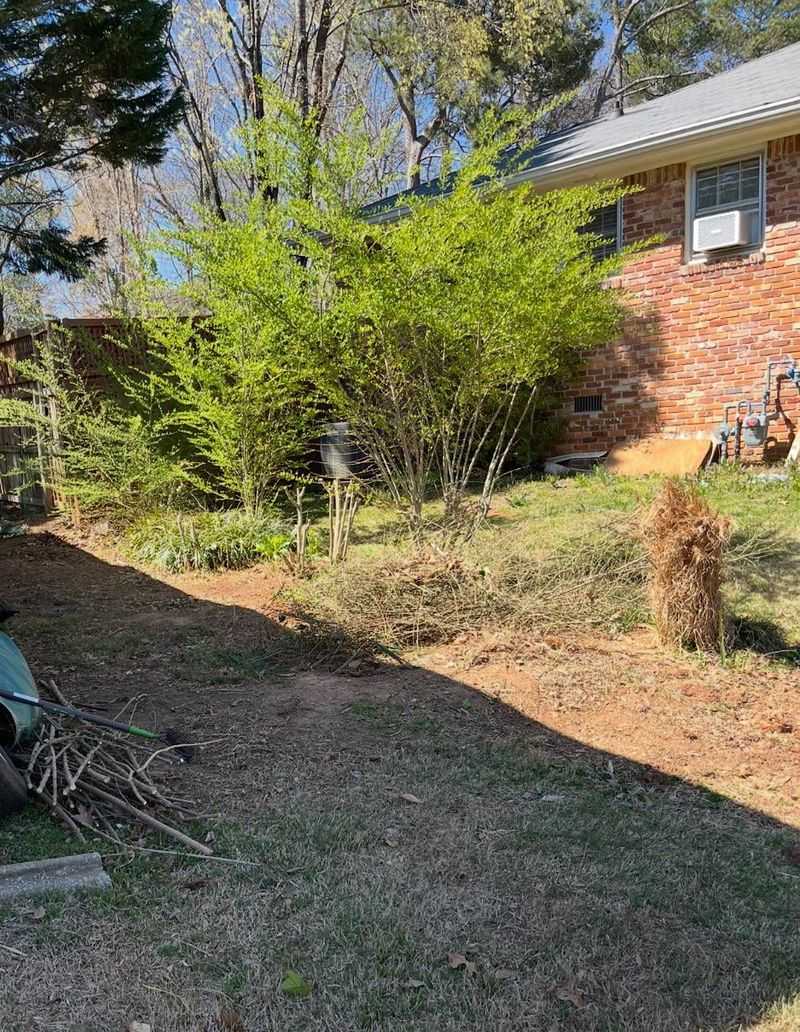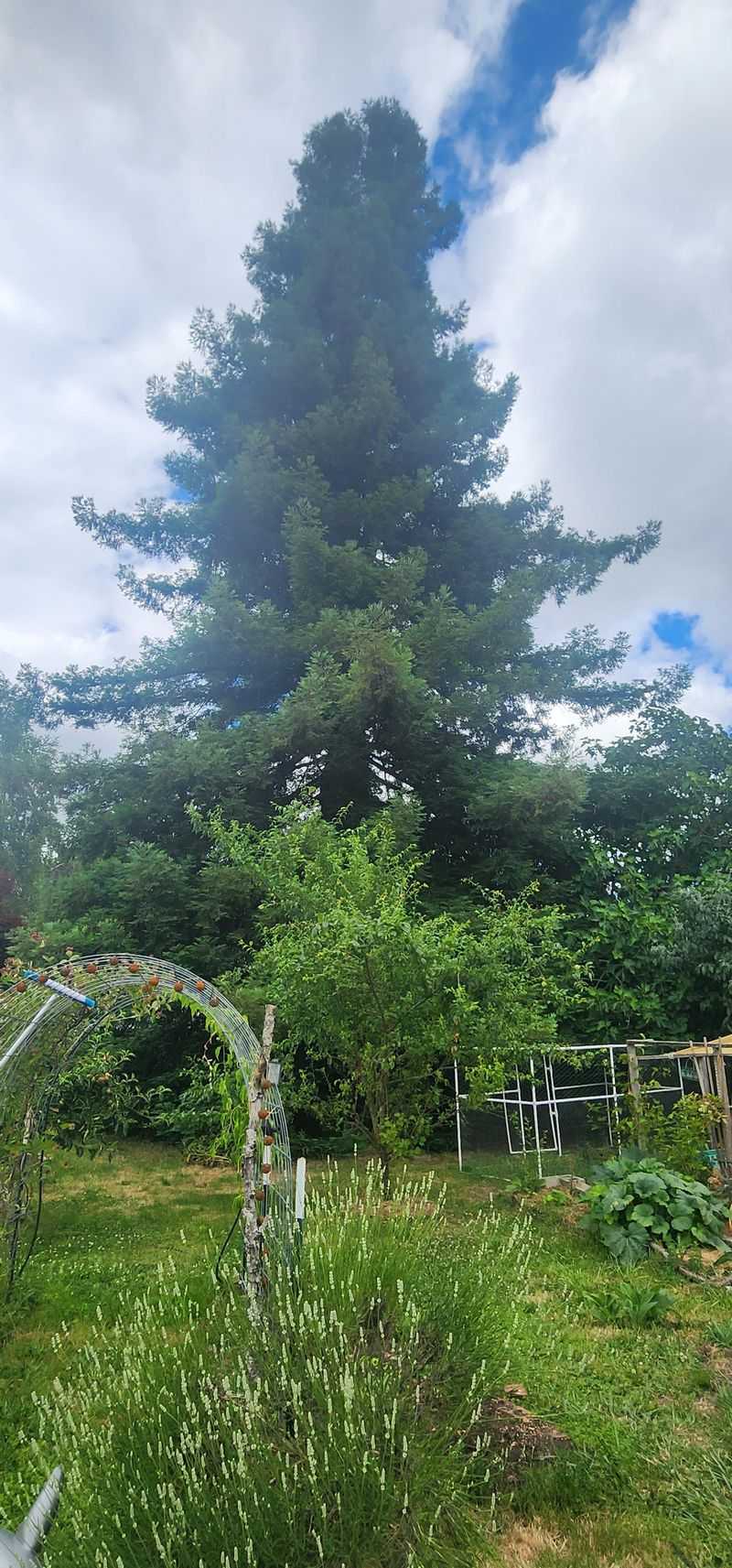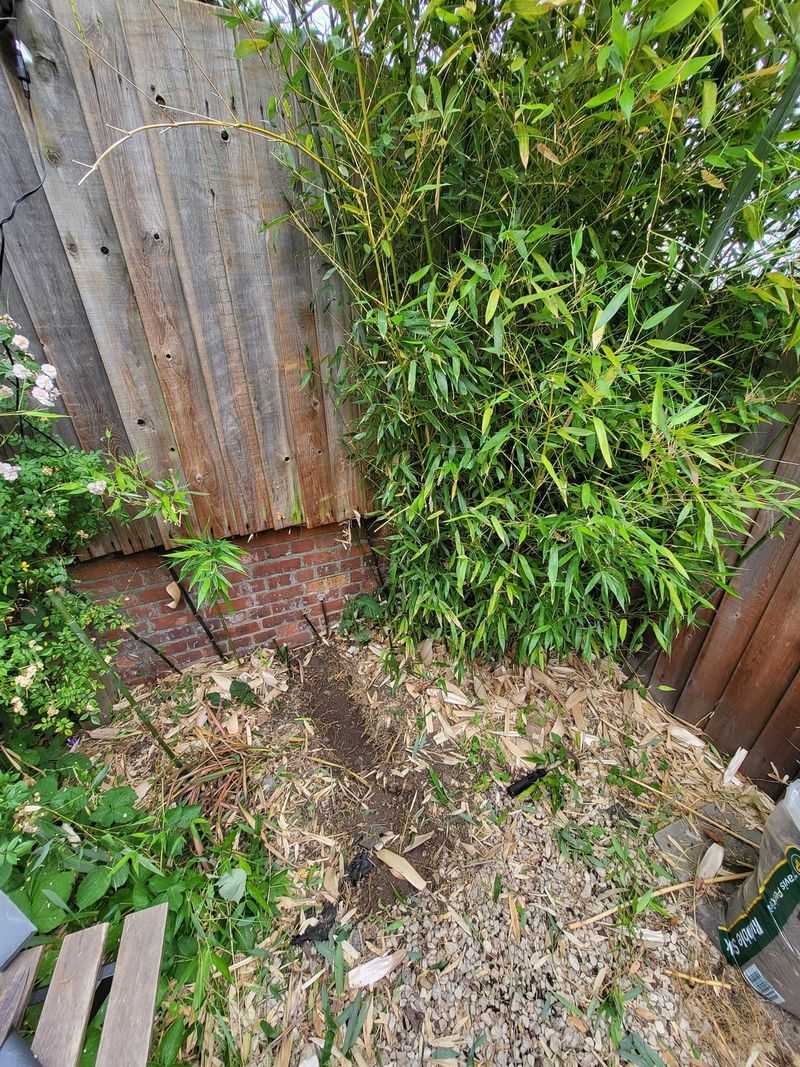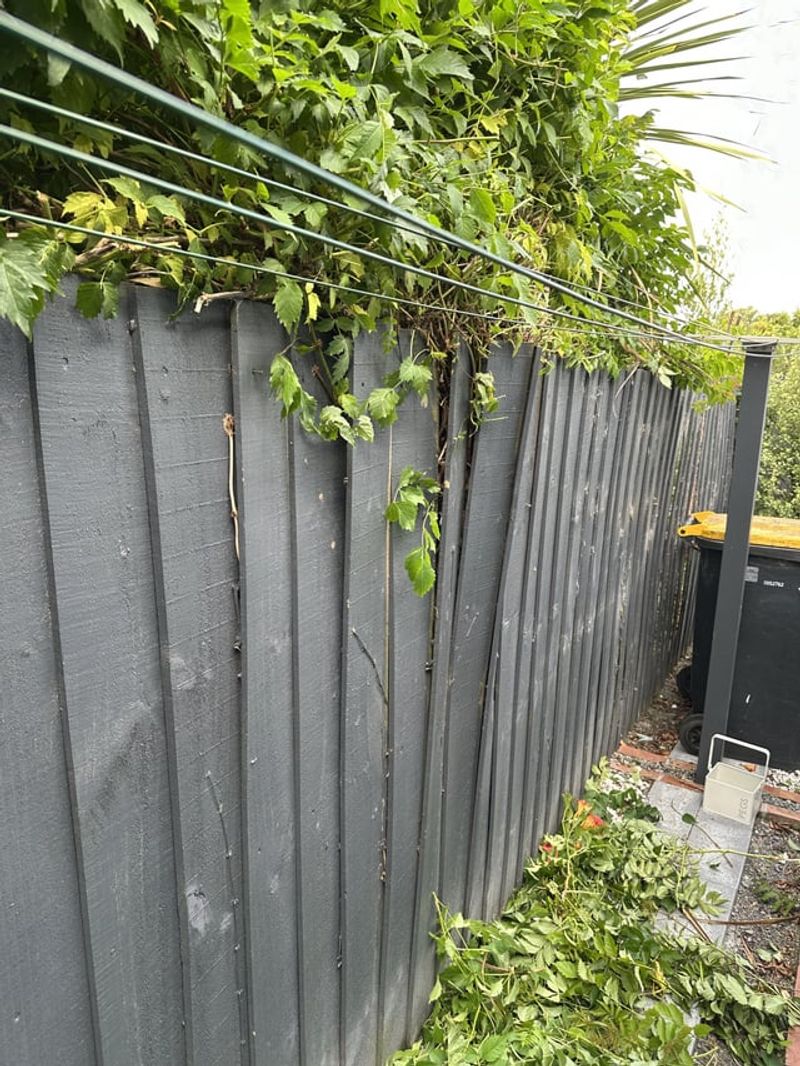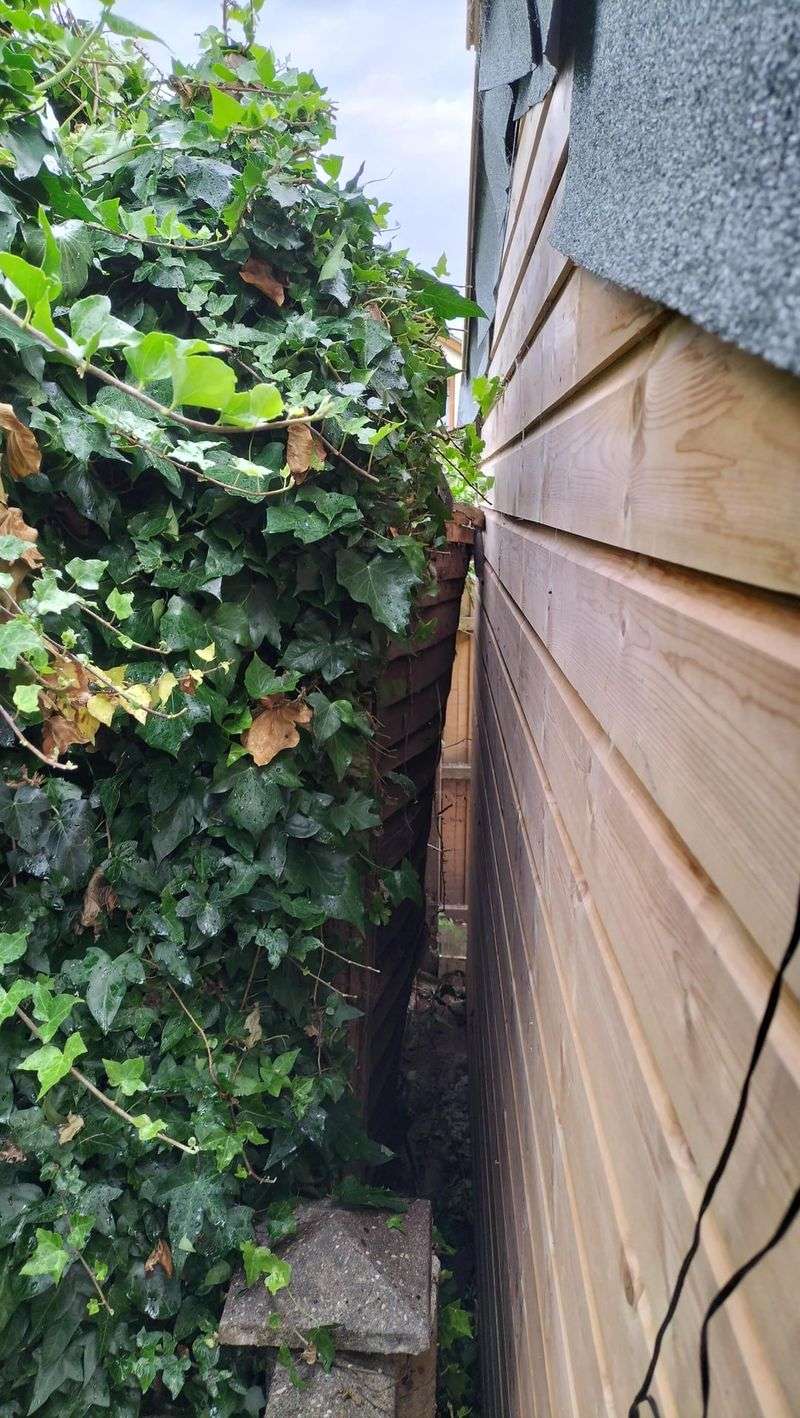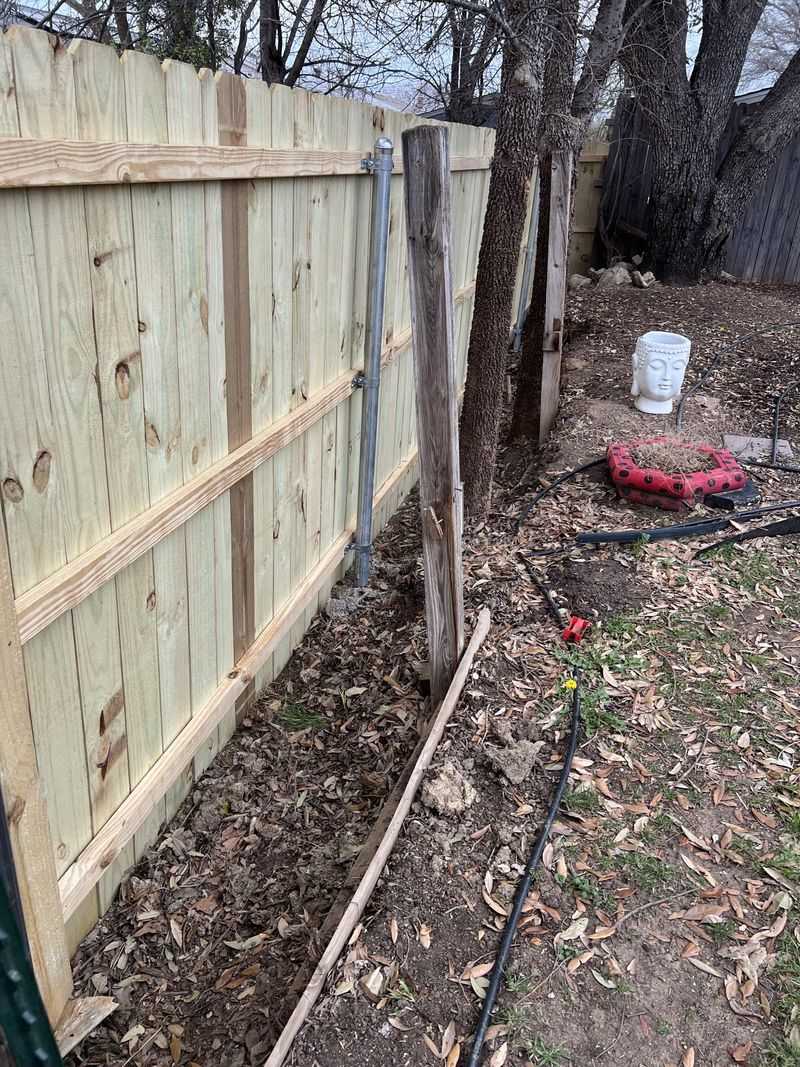Those creeping vines from next door can feel like uninvited guests—sneaking in under the fence and taking over your garden without a warning. They climb, twist, and spread fast, often damaging fences, trees, or choking out your carefully chosen plants.
Start by gently trimming back any invading growth on your side of the property. Install barriers like root-blocking fabric or edging to slow future spread. A friendly chat with your neighbor might also go a long way—especially if they didn’t realize the vines were out of control.
Skip the harsh chemicals or cutting onto their side of the fence without permission. It could escalate tension and make things worse. Stick to clear communication and simple physical boundaries—and you’ll keep both your garden and relationships in good shape.
1. Start With A Friendly Conversation
Knocking on your neighbor’s door might feel awkward, but most vine issues can be resolved with a simple chat. Many homeowners don’t realize their plants have become problematic for others.
I learned this firsthand when my neighbor had no idea her jasmine had crept through our shared fence. She was actually grateful I mentioned it before it damaged her side too.
Choose a weekend morning or early evening when people tend to be more relaxed, and approach the conversation with a helpful rather than accusatory tone.
2. Install A Root Barrier
Root barriers are tough plastic sheets that extend about 2 feet into the ground along your property line. They block underground root spread while allowing water to pass through.
The installation requires some digging, but it’s worth the effort. Last summer, I installed one after battling my neighbor’s aggressive trumpet vine for years.
Hardware stores carry these barriers in various lengths, and they’re relatively affordable compared to the ongoing hassle of constantly trimming invading plants.
3. Prune Regularly At The Property Line
Regular maintenance keeps the problem manageable. Dedicating 15 minutes weekly to check and trim vines at your property line prevents them from establishing a foothold in your yard.
Sharp bypass pruners make clean cuts that minimize damage to the plants. Remember to disinfect your tools between cuts with rubbing alcohol to prevent spreading any potential plant diseases.
The key is consistency – letting vines grow unchecked for even a month can result in significant spread that becomes much harder to control.
4. Document The Encroachment
Taking dated photos of the vine growth over time creates a record that might prove valuable if the situation escalates.
This documentation shows you’ve been dealing with an ongoing issue rather than a recent complaint. My friend avoided a neighborhood dispute by showing her neighbor photos spanning six months of ivy encroachment.
The visual evidence was impossible to argue with. Store these photos digitally with timestamps and consider including measuring tools in the images to demonstrate growth rates and extent.
5. Create A Defensive Planting Zone
Establishing a buffer zone of dense, competitive plants along your property line can naturally discourage invading vines. Plants with thick growth habits take up space and resources that would otherwise be available to the unwanted vines.
After trying chemical solutions with limited success, I switched to planting a row of ornamental grasses along my fence line. Their dense root systems have dramatically reduced vine intrusions.
Choose native species whenever possible, as they’re adapted to local conditions and provide habitat benefits while serving as your green defenders.
6. Apply Organic Vine Deterrents
Several natural solutions can discourage vine growth without harsh chemicals. A vinegar, salt, and dish soap mixture sprayed directly on unwanted vines can be effective for smaller infestations.
The homemade remedy worked surprisingly well on the morning glory vines that kept appearing under my fence. Just be careful to apply it only to the target plants.
Corn gluten meal spread along property lines acts as a natural pre-emergent herbicide, preventing new seedlings from establishing while being safe for established plants you want to keep.
7. Install A Trellis Barrier System
Setting up a trellis a few feet from your property line creates a controlled space for redirecting invasive vines. The structure gives the plants somewhere to climb besides your property.
My neighbor and I collaborated on this solution last year. We installed a decorative trellis on her side where her wisteria could grow beautifully without crossing into my yard.
Choose materials that complement your landscape design – wooden lattice, metal panels, or even repurposed materials like old windows can serve as functional and attractive barriers.
8. Check Local Ordinances And HOA Rules
Many municipalities have specific regulations about plant encroachment and property maintenance that could support your case. Some areas even have invasive species ordinances that prohibit certain aggressive vines.
Our neighborhood discovered that English ivy was actually on the county’s invasive species watch list, giving residents legal backing when requesting removal from adjacent properties.
A quick call to your local extension office or city hall can provide valuable information about your rights and responsibilities regarding plant boundaries.
9. Try Physical Barriers Like Copper Tape
Copper tape wrapped around fence posts or tree trunks creates a barrier that many vines won’t cross. The metal’s properties interfere with the plant’s ability to climb and establish itself.
After reading about this technique in a gardening forum, I applied copper tape along my fence top. The reduction in vine crossings was noticeable within weeks.
The tape needs replacing every few years as it weathers, but it’s an unobtrusive solution that doesn’t harm the plants while effectively redirecting their growth patterns.
10. Hire A Professional Mediator
When conversations stall and tensions rise, a neutral third party can help facilitate a resolution. Professional mediators specializing in neighbor disputes often achieve solutions that satisfy both parties.
The family across the street avoided a costly legal battle by splitting the cost of mediation. Their vine issue was resolved in a single session with a clear plan moving forward.
Many communities offer affordable mediation services through local government or non-profit organizations, making this a practical step before considering legal action.
11. Send A Certified Letter As Documentation
If verbal communications haven’t worked, a polite but formal letter can serve as both communication and documentation. Detail the issue, your previous attempts to resolve it, and request specific action within a reasonable timeframe.
The paper trail proved invaluable when my cousin faced a persistent vine problem. Having documentation of his communication efforts strengthened his position when he eventually needed HOA involvement.
Keep the tone professional and factual, focusing on the problem rather than blaming. Include copies of any relevant local ordinances or HOA rules that support your position.
12. Use Raised Border Edging
Installing deep metal or plastic edging that extends 6-8 inches into the ground creates a physical barrier against shallow-rooted vines. The edging prevents underground runners from crossing into your property.
During my garden renovation last spring, I added aluminum edging along my entire property line. The clean look improved my landscape while significantly reducing underground vine invasion.
Choose edging that complements your garden aesthetic – options range from nearly invisible black plastic to decorative metal that becomes a design feature while serving a practical purpose.
13. Consult With An Attorney About Legal Options
As a last resort, speaking with a property attorney can clarify your legal standing. Most property laws recognize your right to remove encroaching growth from your side of the property line.
My neighbor ultimately needed legal advice after years of dealing with damaging kudzu vines from an abandoned property next door.
The consultation gave her clear parameters for what actions she could legally take. Many lawyers offer free initial consultations, making it affordable to understand your options before deciding whether further legal action is necessary.
14. Things You Shouldn’t Do
Don’t apply herbicides that could drift to other plants or properties. These chemicals can cause unintended damage and potentially create legal liability for you.
Never cut vines on your neighbor’s property without explicit permission, even if they’re the source of the problem. Trespassing and damaging others’ plants can lead to serious consequences.
Avoid retaliatory planting of invasive species to “get even.” This escalates the situation and may violate local ordinances regarding noxious or invasive plants.
15. Don’t Ignore The Problem
Hoping invasive vines will magically stop at your property line is a recipe for disappointment. These plants grow rapidly and become increasingly difficult to manage the longer you wait.
I made this mistake with a neighbor’s trumpet vine, thinking it wasn’t a big deal until it had wrapped around my fence posts and started damaging the structure. Early intervention would have been much easier.
Even slow-growing vines can eventually cause significant property damage to structures, trees, and other plants if left unchecked for multiple seasons.
16. Don’t Make Modifications To Shared Fences
Adding unauthorized barriers or modifications to shared boundary fences can create legal issues. These structures often have specific ownership and maintenance requirements defined by property law.
My friend learned this lesson when she attached a trellis to a shared fence without discussing it first. The resulting tension could have been avoided with a simple conversation.
If you need to modify a shared boundary structure, always get written permission from your neighbor and check local building codes before proceeding with any changes.
17. Don’t Resort To Social Media Complaints
Venting about your neighbor’s vines on social media or community forums rarely solves the problem and often makes it worse. Public complaints can damage relationships and make cooperative solutions harder to achieve.
A neighborhood dispute in our area escalated unnecessarily after someone posted about it online. What could have been resolved privately became a community-wide issue that took months to settle.
Keep communications direct and private between the affected parties whenever possible, bringing in outside help only when structured and constructive.
18. Don’t Take Matters Into Your Own Hands
Entering your neighbor’s property to remove or damage the source vines is never acceptable, regardless of how frustrated you feel. Trespassing can result in legal consequences far more serious than plant problems.
The temptation to “fix” the problem yourself might be strong, especially after repeated attempts at resolution.
One homeowner in our community faced charges after removing vines from the neighbor’s side of the fence. Always stay on your property and work through proper channels, even if progress seems frustratingly slow.

